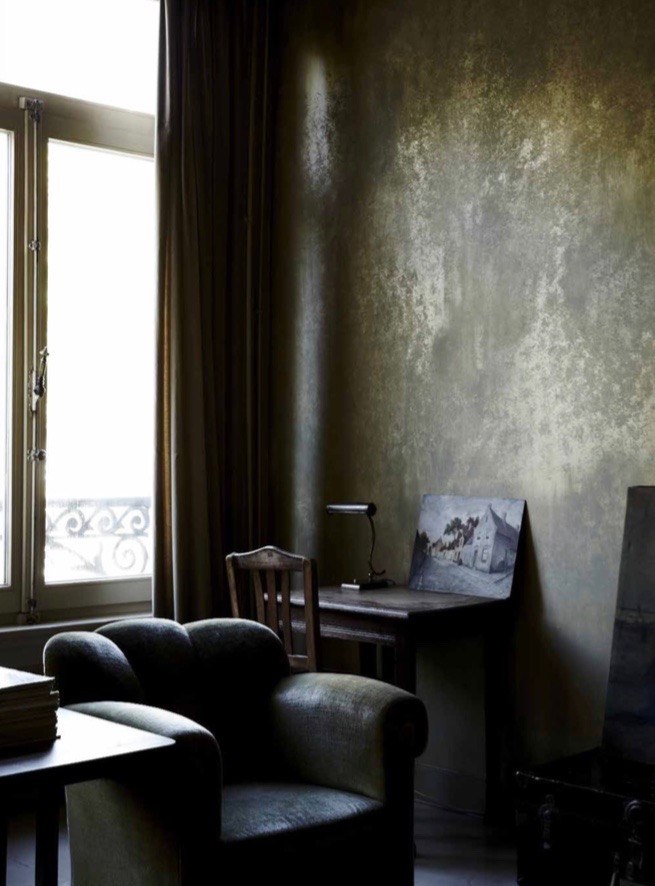All photography by Sharyn Cairns with styling by Glen Proebstel
A little over two years ago the idea of a book based roughly on the concept of wabi-sabi was proposed by long term friends and collaborators, former interiors editor Karen McCartney, photographer Sharyn Cairns and stylist Glen Proebstel. Over time the concept mutated and rather than just representing the concept of wabi-sabi the book became an examination of beauty and how a certain type of beauty presents itself in interior spaces and objects, gathered, curated and loved by a particular type of creative.
As the husband of the author I’ve lived the book more than most and met some of the people featured in its pages and experienced a number of the homes, spaces, galleries and studios that are pictured and which form the visual proof of the book’s subtitle: The beauty of accident, age & patina. So here is a little sample of what the book holds in store for those who hanker after muted tones, originality, sensitivity and surprises while understanding the role of imperfection in art, craft, architecture and interiors.
In an industry that is all about newness its sometimes important to consider the very opposite. In Perfect Imperfect the book’s author, McCartney does just that and talks about the way in which age, patina, the mended and the handmade can offer a very distinct type of beauty – something genuine and unique. Supposedly the term ‘authentic’ is now so overused as to have become a cliché to be avoided but the word’s meaning hasn’t changed and it remains the most essential part of most art forms. Work that is authentic speaks volumes. It doesn’t have to be ‘on trend’ or ‘fashionable’ it’s just honest and interesting with its own inherent beauty. Sometimes this beauty is misshapen, worn or even decidedly odd but it can beautiful regardless.
The book looks at the work and interiors of a number of creative people from around the world - Australia, Belgium, Italy, the UK and the US. While some are artists, designers and architects, others are potters, weavers, knitters – there is even a hotel founder. What they do as a career is less important than how they do it and through the course of this beautifully styled and photographed book, the reader is given an insight into their motivations and thought processes.
Cairns’ absorbing images offer a very different type of interior image. Much of the book is monochromatic or close to it while other parts surprise with a mass of colour. Shadows play a strong role as do the careful attention to scale and juxtaposition. Completely removed from the formulaic, the book is wonderfully art directed by long term friend and collaborator with McCartney, Cairns and Proebstel, Tracy Lines. The whole team have worked together on many projects over many years – and it shows. The book has a a strong vision and a refreshingly original voice.
Of the fifteen chapters in the book I have selected just a couple to show here – three of these are from Belgium and a couple from Australia. These were chosen purely because I was there – although not involved in the creative process – I was just a lucky observer. What is interesting is that a common appreciation for the handmade the old and the mended can trow up such different outcomes – some extremely busy and loud others incredibly quiet and understated. In the process of experiencing this book by osmosis, I have learned to appreciate objects, spaces and materials more deeply and to understand and relish imperfection of many kinds – intentional and accidental.
Perfect Imperfect: The beauty of accident, age & patina is published by Murdoch Books and on sale for $59.95 from early April in Australia and available in the UK in May.
You can see more of the work of photographer Sharyn Cairns on her website here.
A portfolio of Glen Proebstel’s work can be viewed here.
Karen McCartney is the author of 50/60/70 Iconic Australian Houses, 70/80/90 Iconic Australian Houses published by Murdoch Books, Superhouse and White Rooms - both published by Penguin Lantern.















